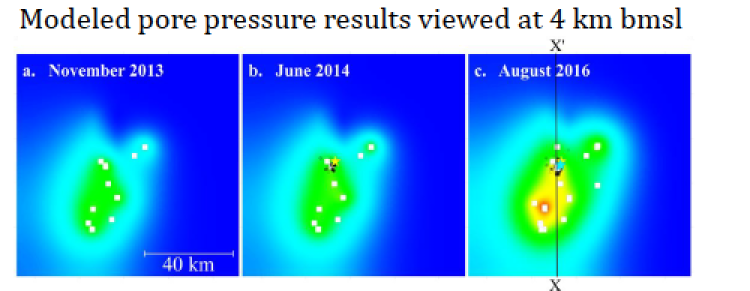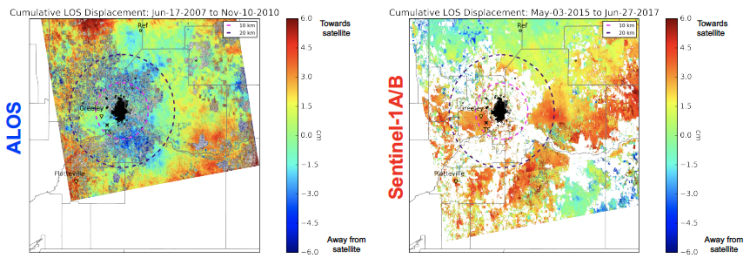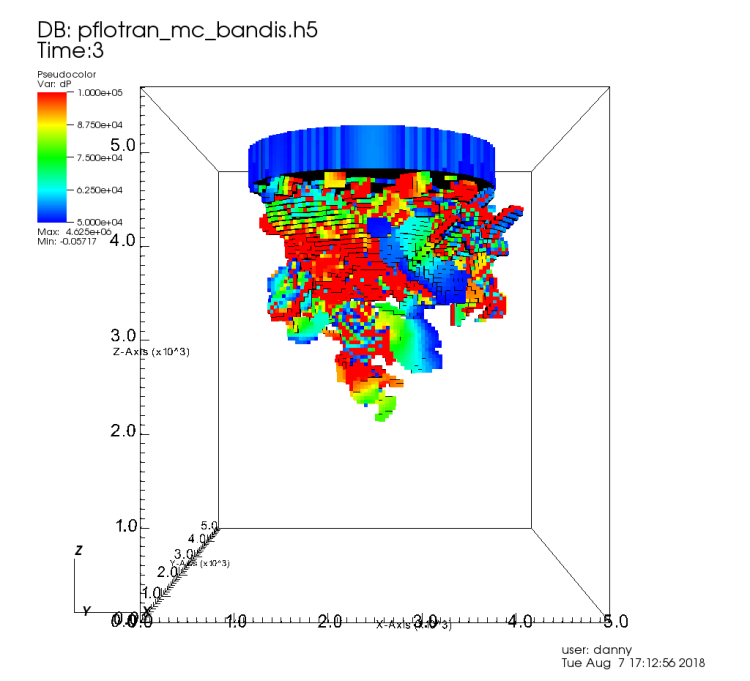Research - Geologic Environment
Three of our research groups are working on research related to induced seismicity and the geologic environment.

(Brown et al., JGR, 2017). Based on Brown's research who is part of the Sheehan group.
The Sheehan group has operated a telemetered seismic network in NE Colorado since 2014 and has examined the relation between the deep disposal of wastewater from oil and gas production and the onset of seismicity near Greeley, Colorado. Raton Basin (Colorado and New Mexico) earthquakes have also been studied, utilizing data from the EarthScope USArray Transportable Array. Earthquake monitoring in NE Colorado is ongoing and future analysis will include studies of temporal variations in anisotropy to test for variations in subsurface changes due to fluid injection. Earthquake data is available here.

Figure based on research done by the Tiampo group.
The Tiampo group uses InSAR (Interferometric Synthetic Aperture Radar) to study the surface deformation associated with induced seismicity. InSAR time-series analysis, achieved through a collection of interferograms covering the same area, can be used to study the spatiotemporal relationship of the surface deformation in relation to well location and its injection volume, strengthening the link between the culprit injection wells and the induced seismicity and shedding light on the potential fluid pathways and the activated faults.
The Rajaram group is developing various approaches to hydro-mechanical modeling in order to study injection-induced seismicity. The group's research primarily focuses on understanding the behavior of injection induced-seismicity within fractured porous media. As pore fluid pressure perturbations are prominent triggering mechanism of seismicity, it is paramount to understand the propagation of these perturbations along highly permeable pathways such as fracture networks. Additionally, their models account for in the influence of the in-situ stress state on fluid flow and potential fault reactivation. The models are being applied to understand the spatiotemporal patterns of injection-induced seismicity.

Birdsell et al., ARMA, 2018. Figure based on research done by the Rajaram group.

